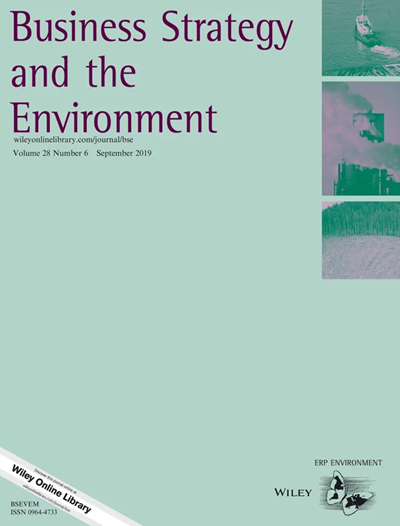考虑ESG和产业链竞争的绿色产品补贴
IF 13.3
1区 管理学
Q1 BUSINESS
引用次数: 0
摘要
补贴政策对促进绿色产品市场的发展起着至关重要的作用。如何有效地设计和使用补贴来促进企业及其供应链在环境、社会和治理(ESG)方面的绩效,仍然是一个值得深入探讨的问题。考虑到C2C竞争对补贴策略制定的影响,以及目前研究大多集中在经济或环境的单一维度上讨论绿色产品补贴,本研究构建了具有C2C竞争的绿色产品分销市场的博弈论模型,并从三个维度考察了政府的绿色产品补贴策略及其对ESG的影响。研究结果表明:第一,政府的环境态度对其政策选择有着深远的影响。当政府高度重视环境破坏时,它更倾向于补贴制造商。相反,如果政府不重视环境破坏,就有可能补贴消费者。如果政府是中立的,但消费者对绿色产品高度敏感,政府可能会选择不补贴。其次,有趣的是,在大多数情况下,政府倾向于补贴制造商,这通常会减少对环境的破坏。然而,补贴消费者可能会加剧对环境的破坏。此外,当政府和消费者的环保意识都较弱时,补贴只会鼓励制造商实现次优的绿色产品水平。这些见解为政府制定政策或供应链管理者制定ESG决策提供了有价值的参考。本文章由计算机程序翻译,如有差异,请以英文原文为准。
Green Product Subsidy Under ESG Consideration and Chain‐to‐Chain Competition
Subsidy policy plays a key role in promoting the development of the green product market. How to effectively design and use subsidies to promote the performance of enterprises and their supply chains on environmental, social, and governance (ESG) is still an issue to be deeply discussed. Considering the impact of chain‐to‐chain (C2C) competition on the formulation of subsidy strategy, and the fact that most of the current research focuses on the single dimension of economy or environment when discussing green product subsidies this study builds the game‐theoretic model to construct a green product distribution market with C2C competition and investigates the government's green product subsidy strategy and its impact on the three dimensions of ESG. The results show that, first, the government's environmental attitude has a profound impact on its policy choices. When the government attaches great importance to environmental damage, it is more inclined to subsidize manufacturers. On the contrary, if the government attaches low importance to environmental damage, it is likely to subsidize consumers. If the government is neutral but consumers are highly sensitive to green products, the government may choose not to subsidize them. Second, it is interesting to note that in most cases governments tend to subsidize manufacturers, which usually reduces environmental damage. Subsidizing consumers, however, may exacerbate environmental damage. In addition, when both government and consumer awareness of environmental protection are weak, subsidies only encourage manufacturers to achieve a suboptimal level of green product. These insights provide valuable references for governments making policy or supply chain managers making ESG decisions.
求助全文
通过发布文献求助,成功后即可免费获取论文全文。
去求助
来源期刊

Business Strategy and The Environment
Multiple-
CiteScore
22.50
自引率
19.40%
发文量
336
期刊介绍:
Business Strategy and the Environment (BSE) is a leading academic journal focused on business strategies for improving the natural environment. It publishes peer-reviewed research on various topics such as systems and standards, environmental performance, disclosure, eco-innovation, corporate environmental management tools, organizations and management, supply chains, circular economy, governance, green finance, industry sectors, and responses to climate change and other contemporary environmental issues. The journal aims to provide original contributions that enhance the understanding of sustainability in business. Its target audience includes academics, practitioners, business managers, and consultants. However, BSE does not accept papers on corporate social responsibility (CSR), as this topic is covered by its sibling journal Corporate Social Responsibility and Environmental Management. The journal is indexed in several databases and collections such as ABI/INFORM Collection, Agricultural & Environmental Science Database, BIOBASE, Emerald Management Reviews, GeoArchive, Environment Index, GEOBASE, INSPEC, Technology Collection, and Web of Science.
 求助内容:
求助内容: 应助结果提醒方式:
应助结果提醒方式:


